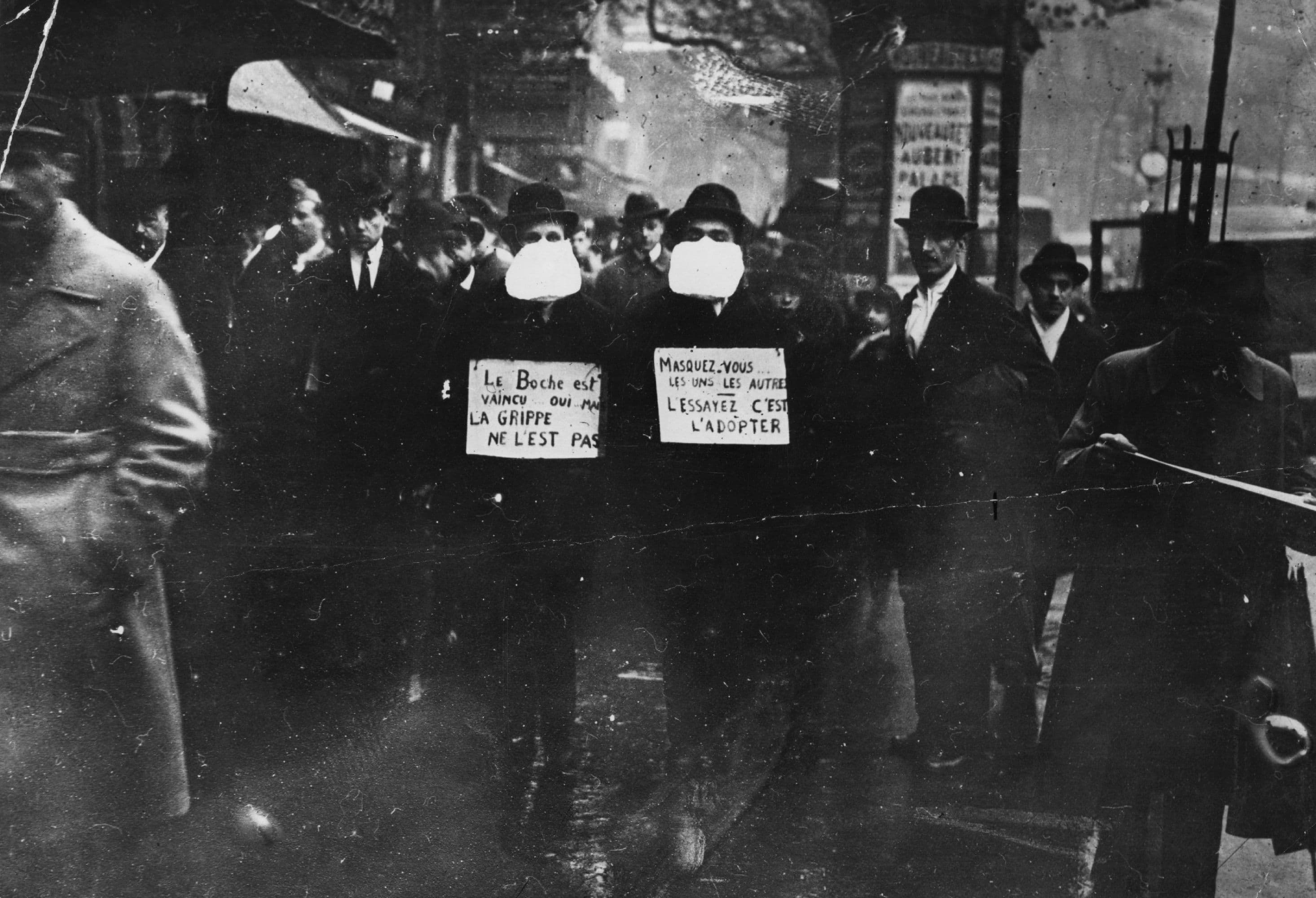A second wave hit in the summer starting in late August in Boston. This highly fatal second wave was responsible for.
 What The Covid 19 Pandemic And The 1918 Flu Pandemic Have In Common
What The Covid 19 Pandemic And The 1918 Flu Pandemic Have In Common
As the pandemic reached epic proportions in the fall of 1918 it became commonly known as the Spanish Flu or the Spanish Lady in the United States and Europe.

Spanish flu start. There is also no way of being certain where Spanish Flu originated although the trenches of World War I where poor sanitation and disease was rife are an often-cited contender. Scientists that study the evolution of viruses also think the so-called Spanish flu originated in the US. The 1918 flu pandemic became known as the Spanish flu because wartime censors minimized reports of the illness while the Spanish press.
The 1918 pandemic ended simply by running its course. The name of Spanish Flu came from the early affliction and large mortalities in Spain BMJ10191918 where it allegedly killed 8 million in May BMJ 7131918. In the US the Spanish flu was first observed in January 1918 in Kansas.
Army base was home to the first confirmed outbreak on March 11 1918. Although the Spanish Flus exact point of origination has been hotly debated some contend it all began in Haskell County Kansas. Albert Gitchell was reported sick on March 4 1918 at Fort Riley.
In 1918 a strain of influenza known as Spanish flu caused a global pandemic spreading rapidly and killing indiscriminately. Far more than the deaths from combat casualties in the World War One 1914-18. Scientists still do not know for sure where the Spanish Flu originated though theories point to France China Britain or the United States where the first known case was reported at.
The pandemic peaked in the US. Due to its genetic make-up they argue it probably originated in the Western Hemisphere and probably in North America. The Spanish flu reached its height in autumn 1918 but raged until 1920 initially gaining its nickname from wartime censorship rules that allowed for reporting on the diseases ravages in neutral.
But though the Spanish flu didnt start in Spain that country did suffer quite badly with it. The Spanish Flu which infected a quarter of the worlds population 100 years ago this year is a riddle that remains largely unsolved. During the second wave in the fall of 1918.
Where Did the Spanish Flu Start. The filthy rat-infested conditions undoubtedly affected the soldiers immune systems making. The outbreak was caused by influenza type A subtype H1N1 virus.
Theres a long-held theory that Camp Funston a US. Many assumed this was because. By the time the second wave had started in the United States France and Sierra Leone in August the H1N1 Influenza-virus had mutated.
Remembering the 100 th Anniversary of the Spanish Flu Pandemic In January 1920 Stan McVittie was a fit and robust electrical engineer working at a hydro-electric generating plant on the Wahnapitae River in Northern Ontario. Within few days over 522 men at Fort Riley reported ill. Young old sick and otherwise-healthy people all.
Just six years out of university he loved. Within hours of the first soldier falling ill dozens more came down with the flu. However a first wave of influenza appeared early in the spring of 1918 in Kansas and in military camps throughout the US.
The great influenza pandemic of 1918-19 often called the Spanish flu caused about 50 million deaths worldwide. Spanish flu struck in waves. The first hit the United States in the spring of 1918 but was mild and went almost unnoticed.
The Spanish flu began in the US. In the early 20th century flu was viewed as a democratic disease nobody was immune from it but even in the thick of the pandemic it was noted that the disease struck unevenly. Few noticed the epidemic in the midst of the war.
Influenza pandemic of 191819 the most severe influenza outbreak of the 20th century and among the most devastating pandemics in human history. Learn about the origins spread and impact of the influenza pandemic of 191819. There were 3 different waves of illness during the pandemic starting in March 1918 and subsiding by summer of 1919.
Although some historians and scientists argue the 1918 influenza pandemic began elsewherein France in 1916 or China and Vietnam in 1917many believe the flu spread from Haskell County Kansas to Camp Funston. This strain was so infectious that by the end of October it had spread from coast to coast and had a morbidity rate of about 28 percent.





